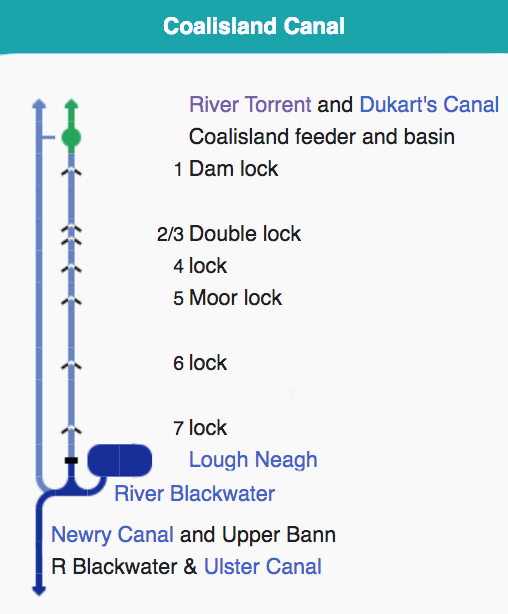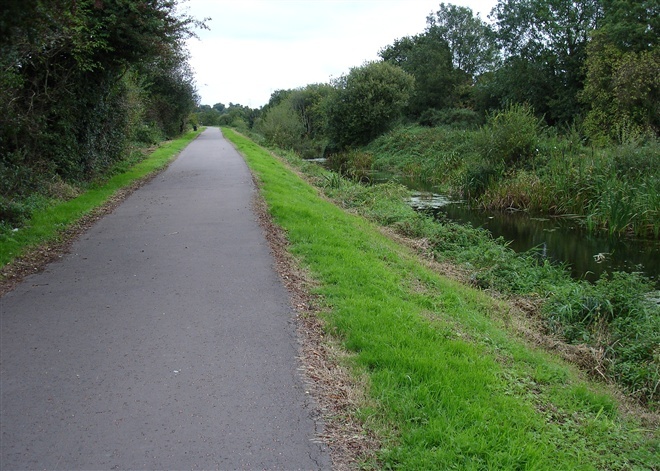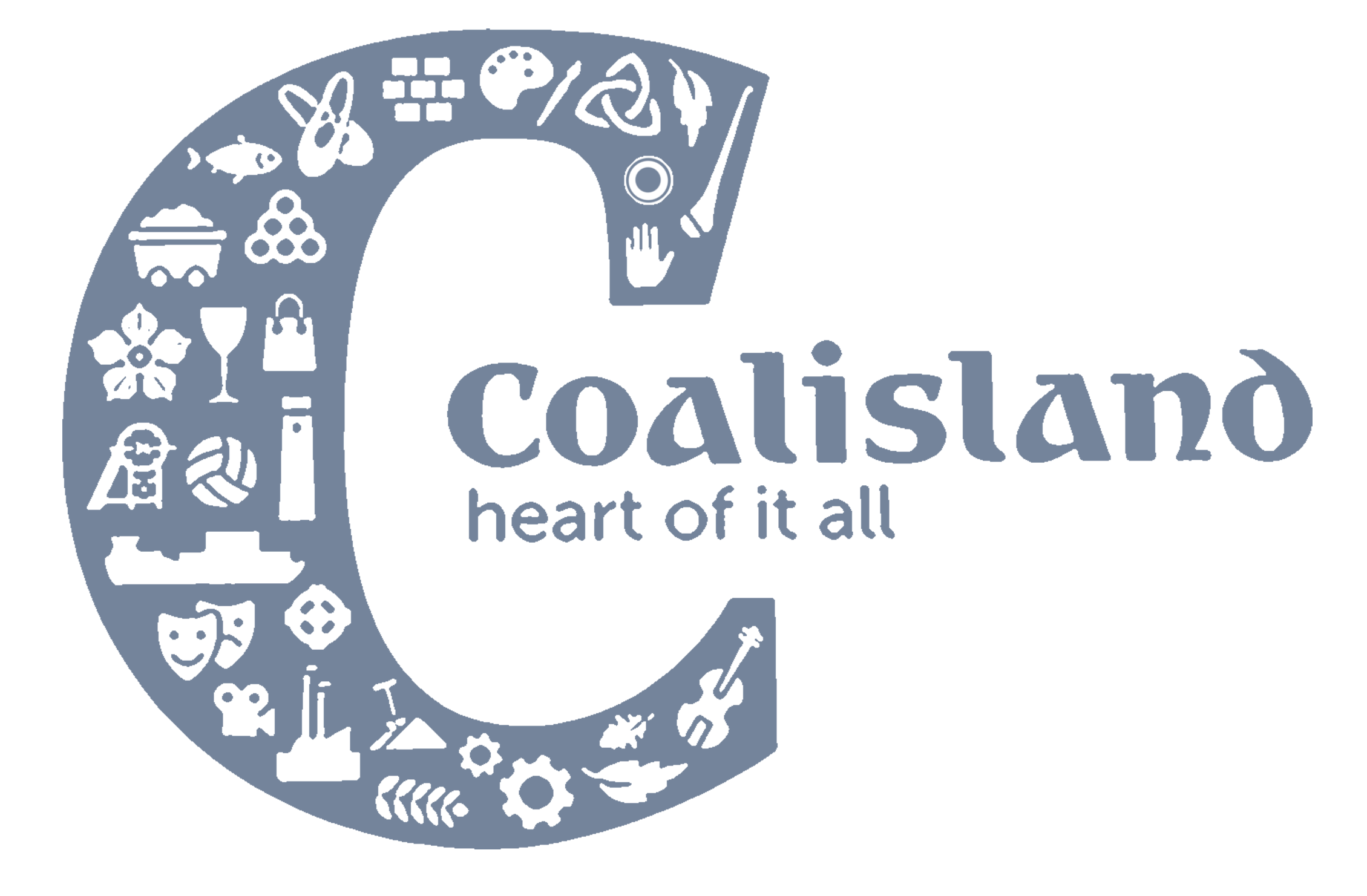
Stretching over 7km from the town of Coalisland to the River Blackwater, the Coalisland Canal now provides a beautiful walk through farmland along a well-maintained path. There are several places along the canal to park and walk from. It is used by walkers, runners and cyclists daily, while also giving the users a chance to see some local wildlife such as dippers, kingfishers and maybe even an otter.
For the Coalisland Canal Walk routes, maps and further information please go to the WALKNI website.

History of the Coalisland Canal
Construction of the canal began in 1733, but progress was slow and it was not officially opened until 1787. The canal was built to reduce the cost of transporting coal from the Tyrone coalfields to Dublin. After some difficulties with the infrastructure, traffic slowly increased, reaching its peak in 1931. Traffic then declined rapidly, and the canal was abandoned in 1954.

By 1727, some 60,000 to 70,000 tons of coal were being imported into Dublin, and the idea of supplying that from Irish sources gained popularity. Thomas Prior wrote to support a canal from Dungannon, near Coalisland, in 1727, while two years later, Arthur Dobbs the Surveyor-General outlined the advantages of a canal to Lough Neagh, which he thought could be built relatively easily. In the same year, Francis Seymour, who owned a colliery at Brackaville, near Coalisland, published a pamphlet which supported the idea and also suggested that a canal could be cut across a bog from Drumglass, where many of the pits were located.
1729 also saw the establishment of the Commissioners of Inland Navigation for Ireland. They assessed a number of proposals, authorising work on the Newry Navigation in 1731 and a canal from Coalisland to the Blackwater in 1732. The canal would be around 4.5 miles (7.2 km) long, and would run broadly parallel to the River Torrent. Work began in the summer of 1733, with Acheson Johnson supervising the project.
There were several difficulties with the construction. At Coalisland, a large basin was dug out, which was supplied by a feeder from the River Torrent. The river carried quantities of stones, clay and silt, which clogged the basin, locks and levels once the water entered the canal. Of the seven locks required, the upper two were built on sand, while the lower three were built in a peat bog. Both environments required the sinking of piles and the provision of paved floors to the lock chambers, neither of which were adequately done. The lower reaches were very close to the river, which flooded it when there was plenty of water, and drained it when there was not. While the much longer Newry Canal had only taken ten years to complete, the Coalisland Canal had taken over fifty when it opened in 1787.
The volumes of coal transported along the canal were lower than had been predicted, hampered by the lack of a proper link from Coalisland to the collieries, but trade in flaxseed, grain, rock salt, timber, fish and coarse hardware gradually built up. However, the condition of the canal deteriorated, and by 1801, it was almost derelict. Between 1801 and 1812, over £20,000 was spent on the canal, which included scouring the basin at Coalisland, building wharves, stores and boundary walls around it, rebuilding of lock walls and floors, dredging the whole canal to give a depth of 4.5 feet (1.4 m), repairs to lock houses, puddling of the lower reaches where it passed through peat, and upgrading of the towpaths.

While trade in a wide variety of commodities steadily increased, coal traffic did not. Coalisland developed as an industrial centre, importing raw materials along the canal, and exporting tiles, bricks, earthenware, spades, shovels, sulphuric acid and sulphur, all of which were manufactured locally. Distribution of these products was however hampered by the narrower locks and shallower depth of the Ulster Canal, which connected the River Blackwater to Lough Erne.
The start of the First World War in 1914 changed the economic climate, and the canal faced increasing competition from road transport once the war was over. Very little traffic used the canal during the Second World War, and all traffic ceased in 1946. In April 1954 the canal was officially abandoned and relegated to the status of a drainage ditch.
Presently, the Coalisland Canal and pathways are looked after by the Rivers Agency and Mid-Ulster District Council respectively. The Coalisland Canal branch of the IWAI act as a watchdog for the Canal, advocating both for the users and wildlife. They also care for the canal practically and organise public events to encourage its use.
